Late-Round Pitchers Are a Trap on Underdog Fantasy
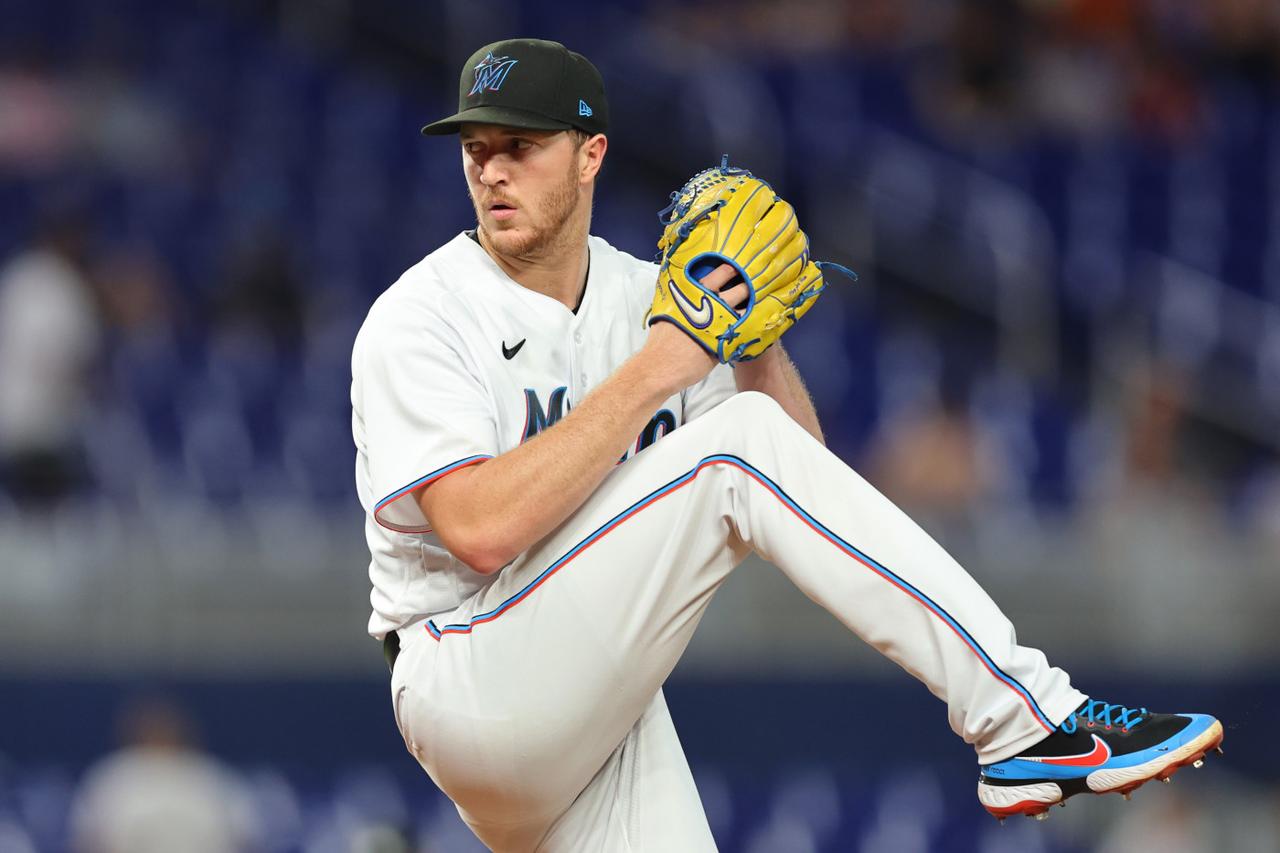
A few notes before we get started:
So far this offseason we've looked at the scarcity of outfielders on Underdog and why aces are undervalued in early drafts. Today we'll be analyzing whether or not it's worth drafting late-round pitchers.
All of the below charts were created by @b3isbol using data provided by us at Underdog. Chris is a must-follow account for anyone serious about playing MLB Best Ball on UD. Follow him for tons of great insights!
The full data set can be found and downloaded here. It includes all the picks with how many points each player scored and how well each team did in last year's contest "The Dinger."
That's enough! As always don't hesitate to reach out on Twitter anytime with thoughts and/or questions, @toomuchtuma.
Let's start by talking about the number of pitchers teams should draft. Here were the most common builds from 2022 (formatted by P-IF-OF).
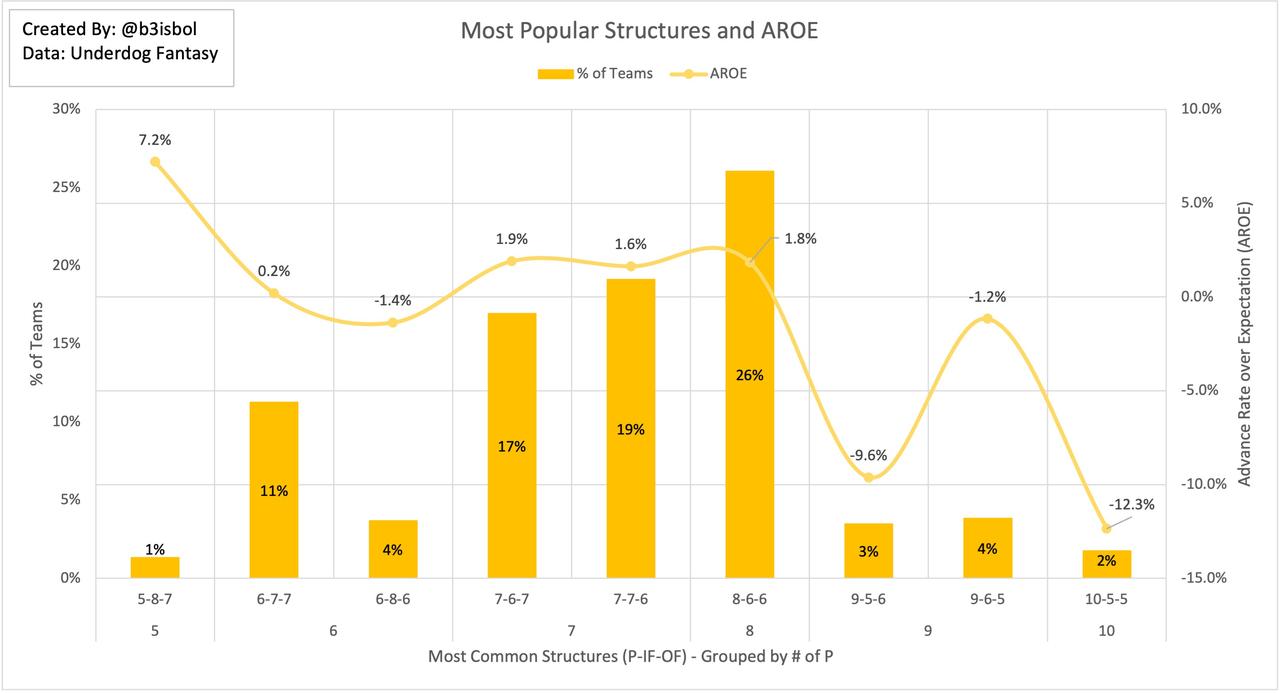
There's a lot going on in this chart (thanks, Chris...) but the key to hone in is the bar graph, which shows how popular each build was in '22.
As you can see, 8-6-6 (so 8 pitchers, 6 infielders, 6 outfielders) was the most popular build. This was followed by 7-7-6 and then 7-6-7. Essentially, 8 or 7 pitcher builds were by far the most common.
Now let's focus on just pitchers. Here's another crazy-looking chart:
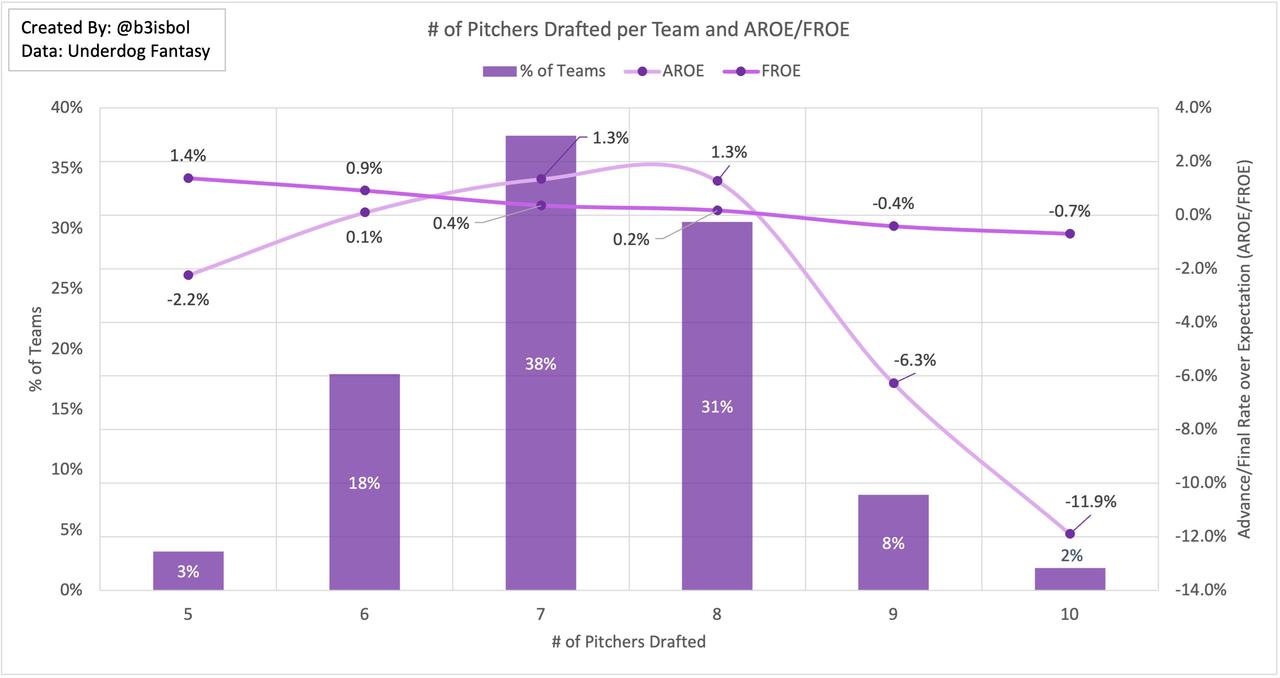
This one isolates the number of pitchers drafted per team, and again you can see that taking 7 or 8 pitchers was the default approach for drafters.
Now let's talk about Chris' metric Advance Rate Over Expectation (AROE). That's the soft purple, bell curve-ish line you see. This shows how likely a team in the Dinger was to make it to Round 2 (so the playoffs) based on the number of pitchers taken.
When looking at AROE, 7 and 8 pitcher builds were the most successful.
However, we're also going to focus on Finals Rate Over Expectation (FROE), which tells us, of the teams who advanced to the playoffs, which ones made the finals more often than expected? This is the flatter, dark purple line you see. And it's where things get interesting.
Of teams that advanced, 6 pitcher builds, and even 5 pitcher builds, had a better shot of reaching the finals. 7-8 starters gave you a better shot at advancing at all, but once everyone advanced, 5-6 pitcher builds gave teams an edge! Let's talk about why....
Last week I wrote about why aces are undervalued in early drafts. The rationale was there just aren't that many SPs who log 180 or 200 innings anymore. This isn't as big of a deal in managed, season-long fantasy leagues because you have the waiver wire and trades to get you through. In Best Ball there is no fallback. Every roster spot is precious.
My "aces" article focused on the price for those arms not being too high at the moment. Shane Bieber is presently the SP12 and he doesn't get drafted until the end of Round 4. There's the opportunity to select multiple aces in Rounds 3-8. This is important because of the top 20 highest scoring SPs from 2022, 15 of them were taken in the first 8 rounds.
In managed leagues you can take a late flier on a young arm who gives you great ratios for a while, even if he doesn't give you great volume. And if he gets shut down for an innings limit then you can make a trade or pick up someone else, including a breakout option. You don't have those options on UD.
To hammer this point home, not only are aces currently a value for 2023, but we saw last season that late-round pitchers didn't help, at all.
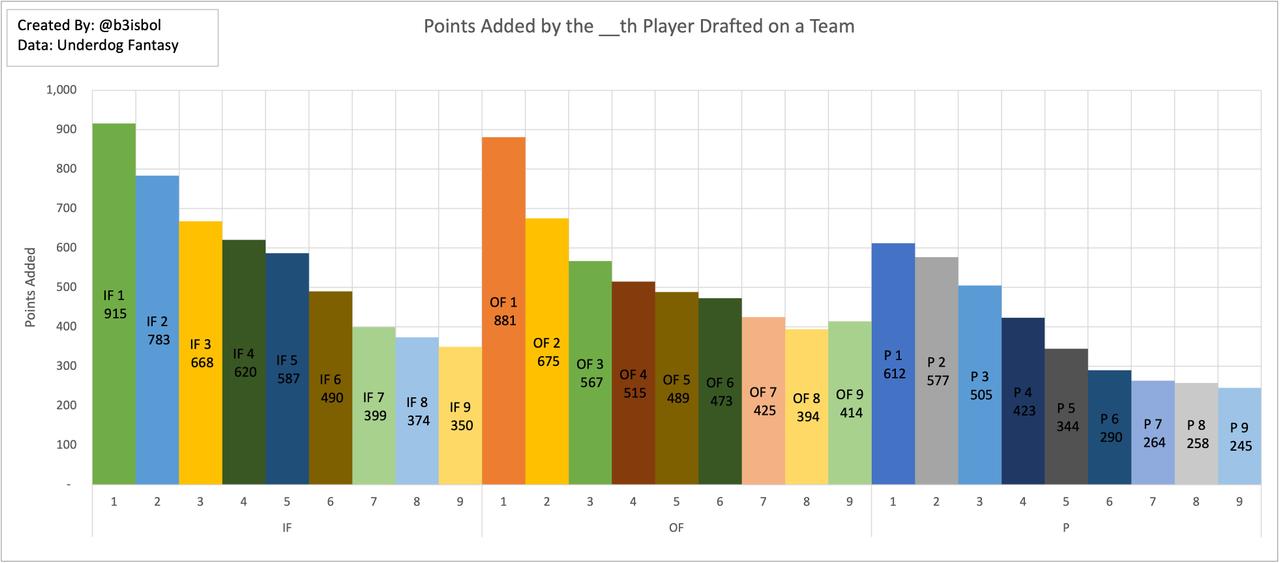
This fun, colorful graph shows the amount of "points added" by the _th player drafted at a position. For example, the elite tier of outfielders made a huge difference last season. It's why we've already spent so much time harping on outfield scarcity. It's why 8 of the first 9 picks in ADP are outfielders.
Now look at the right side of this chart - the pitchers. Starters score so much less than infielders/outfielders. We knew that. However, the later-round pitchers score SO much less, both relative to pitchers taken earlier and the player pool as a whole. It's the weakest subset in the entire game.
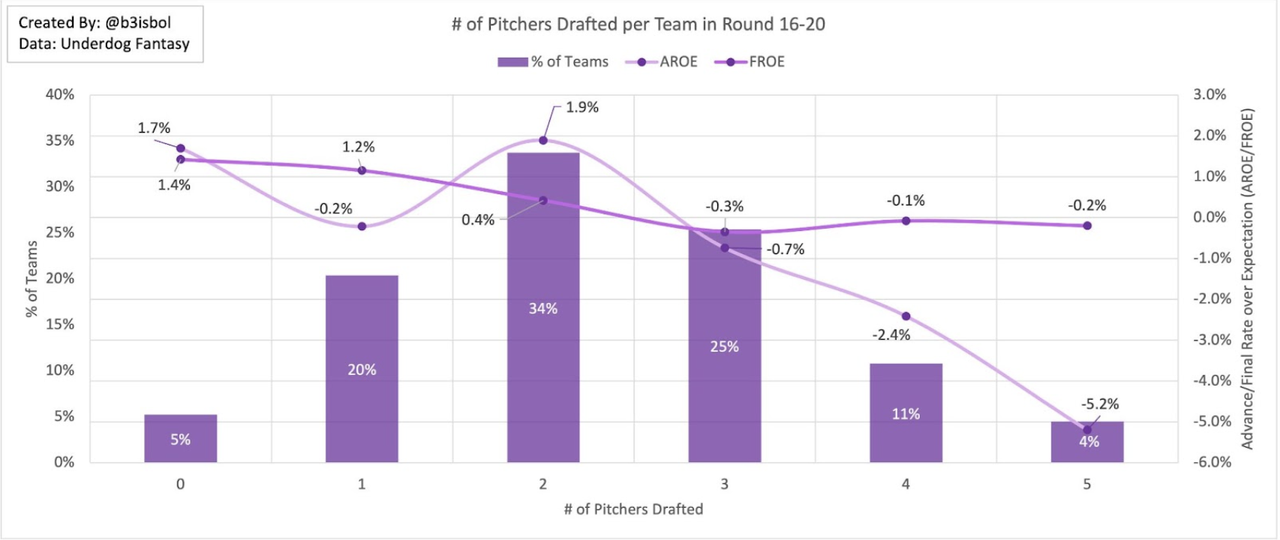
Last chart of the day, I promise. But it's arguably the most important. This one shows the AROE and FROE of teams who took a certain number of pitchers in rounds 16-20 last season.
As you can see, once you started taking 3+ arms in the final 5 rounds, you were losing EV. Taking 0, 1, or 2 pitchers in this range was optimal. Taking 0 had the best combo of AROE and FROE. Why is this?
We saw before that 5-6 pitcher builds were less likely to advance to the playoffs than 7 or 8 pitcher builds. However, they were more likely to then advance to the finals. We're also seeing that successful teams don't take SPs in the final rounds, and we know that last year the highest scoring arms were taken in the first 8 rounds.
This should give 2023 drafters urgency to stockpile the highest quality pitchers early in drafts, and then ignore the position altogether later on. It'll admittedly create a "fragile" build -- SPs are more likely to get hurt than position players, and they don't score as much.
These fragile rosters also give you access to the best performing teams on Underdog. IF the starters you drafted early stay healthy and you roll into the playoff with 5-6 dominant arms (and you only need to start 3 per week), AND you supplement that with tons of late-round position players, giving you more shots at finding the best starting lineup among the positions that score the most points, then you're live to win it all.
In 2022, the Underdog Best Ball community approached pitching as a quantity problem. "All these late-round arms project the same so I'm going to just take several."
Now we know pitching in this format is a quality problem. You need the best starters come playoffs. Take several in the early-to-mid rounds, and then mostly stop. It's how to avoid the late-round pitcher trap.